About Braathens S.A.F.E:

Braathens ASA, until 1997 Braathens South American & Far East Airtransport A/S and trading as Braathens SAFE, was a Norwegian airline which operated from 1946 until it merged with Scandinavian Airlines (SAS) in 2004 to become SAS Braathens. For most of its history, Braathens was the largest domestic airline in Norway, but did not operate an international network for many years. Its main hubs were Oslo Airport, Fornebu and later Oslo Airport, Gardermoen, and briefly Stockholm-Arlanda Airport. The airline operated 118 aircraft of 15 models, mostly Boeing 737 variants. Braathens served 53 airports and 50 cities with scheduled services through its history.The airline was founded in 1946 by Ludvig G. Braathen and originally used a fleet of Douglas DC-4 aircraft on routes to the Far East and South Africa. From 1954 the airline was forced to operate all its scheduled flights domestically, where it used de Havilland Herons. Braathens SAFE retained an international charter service using the DC-3 and DC-6. As new domestic airports were built, Braathens SAFE and SAS were awarded each their share of monopoly route concessions. The Fokker F-27 was introduced in 1958, but was phased out with the delivery of the Fokker F-28 and Boeing 737-200 jets from 1969. The last F-27 was phased out in 1975. After a two-year use of Boeing 767 aircraft, Braathens operated an all-Boeing 737 fleet from 1986.
Increased domestic competition on routes started from 1987, along with Braathens SAFE again starting international routes. By 1994 the fleet had been replaced with Boeing 737-400 and -500 and domestic deregulation of the airline market was introduced. Braathens followed up by listing itself on the Oslo Stock Exchange, joining an alliance with Dutch airline KLM and expanding its operations to Sweden through purchasing Transwede and Malmö Aviation. The 1998 opening of Gardermoen resulted in an intense price war with SAS and Color Air, from which Braathens never recovered financially. Braathens was controlled by Braganza until 2001, when it was sold to the SAS Group. Braathens merged with SAS Norway on 1 May 2004.
HISTORY:
Braathens South American & Far East Airtransport A/S was founded on 26 March 1946 by Ludvig G. Braathen through his shipping company Ludvig G. Braathens Rederi and its holding company Braganza.[1] Braathens had made good money during World War II with the participation in the Norwegian Shipping and Trade Mission. His initial intentions were to fly crew and supplies to his and others ships throughout the world—primarily in the Far East. Braathen traveled to the United States, where he bought several used 44-passenger Douglas C-54 (DC-4) aircraft from the United States Air Force. Twenty pilots were recruited and sent to Fort Worth for certification. The first plane, LN-HAV Norse Explorer, landed at Oslo Airport, Gardermoen on 26 December 1946.
Braathens Douglas DC-3 in 1952 wearing the airline's full name
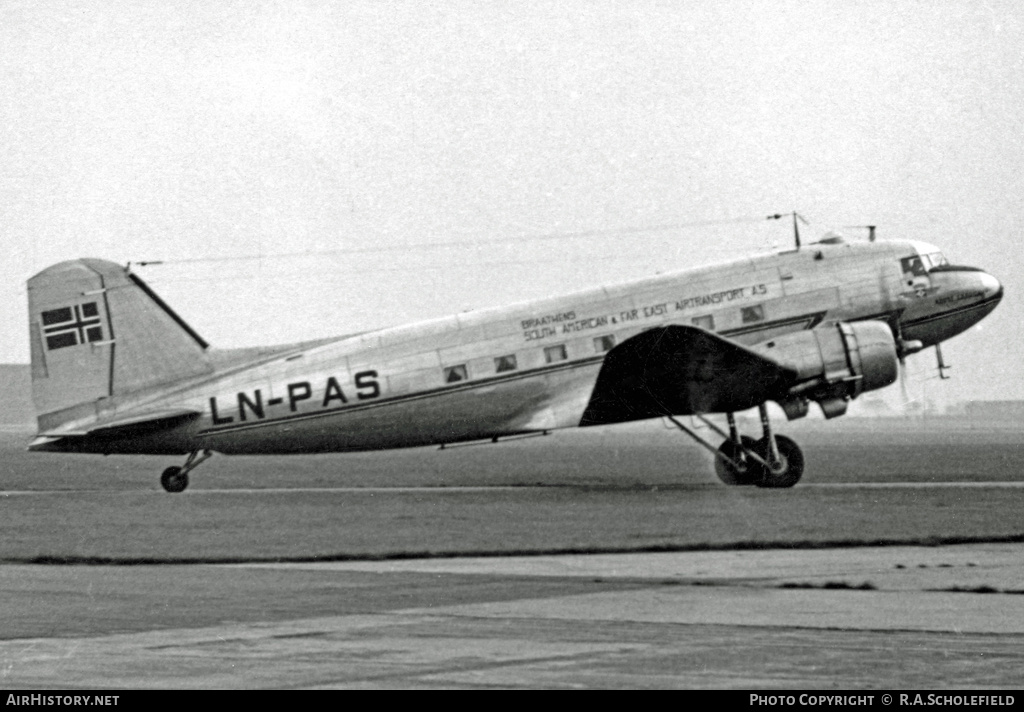
The first service run from Oslo to Cairo via Copenhagen and Paris on 30 January 1947. Various charter services were provided, such as evacuating French and British personnel prior to the creation of Israel. The first Braathens SAFE flight was to the Far East started on 24 February from Oslo, with landings at Amsterdam, Marseille, Cairo, Basra, Karachi, Calcutta and Bangkok before Hong Kong, where Norske Skyfarer landed on 8 March. Total flight time was 46 hours. The only other services to the Far East from Europe were operated by KLM and British Overseas Airways Corporation. The regular services could be done with a round trip time of nine to ten days, including overnighting in Cairo, Karachi and Bangkok, and with technical revision of the plane in Hong Kong. In 1947, Braathens SAFE flew twenty-five trips to Hong Kong, five to New York City and one to Johannesburg. Douglas DC-3 aircraft were introduced the same year for shorter charters. The following year, Braathens SAFE started the first trial flights to South America. By 1948 the airline had weekly trips to the Far East.
The partially state-owned Norwegian Air Lines (DNL) was granted a monopoly on all domestic and international flights during the late 1940s. They started the Scandinavian Airlines System (SAS) cooperation and stated that they would start a route to the Far East. Braathens SAFE's charters were by 1948 so regular that a concession would be needed. SAS demanded preferential treatment, but Braathens SAFE threatened to flag out and the government gave them a concession that lasted until 1954, on condition they establish a technical base at Stavanger Airport, Sola. The airline chose at the same time to move its main base from Gardermoen to Oslo Airport, Fornebu
The SAS cooperation resulted in a full merger from 1951, after a merger proposal from Braathens SAFE had been rejected. Braathens SAFE made proposals to expand its routes to New York and Tokyo, but both were rejected by the government. The SAS merger bound the government to issue the Far East concession to SAS, and Braathens lost their international service rights then. Braathens SAFE started cooperating with Icelandic Loftleidir, who held the rights to fly to North America via Iceland. This involved Braathens leasing personnel and aircraft to Loftleidir and profit sharing on the route, in an agreement which lasted until 1961
Charter flights to Europe using Douglas DC-6 aircraft started in 1950. The airline applied for and was granted permission to fly from Oslo via Tønsberg Airport, Jarlsberg to Stavanger. Braathens acquired de Havilland Heron aircraft to operate the route. Permission to fly from Oslo to Trondheim Airport, Lade was granted in 1953, a route also served by SAS. Termination of Far East routes led to a 90% drop in revenue and the airline made several unsuccessful applications for new routes. They were successful in obtaining permission include stopovers on Oslo–Stavanger services at Kristiansand Airport, Kjevik and Farsund Airport, Lista. From 1956 stopovers took place at Hamar Airport, Stafsberg and Notodden Airport, Tuven, but these only lasted until 1959. By then it had added Røros Airport to its destinations. Following the bankruptcy of West Norway Airlines in 1957 and the opening of Ålesund Airport, Vigra the following year, concessions were reshuffled, and Braathens was granted a monopoly on services to Ålesund and between Trondheim and Bergen, while it and SAS would compete on services between Oslo and Stavanger, Kristiansand and Trondheim
Fokker F-27 Friendship in 1974

Braathens SAFE was the second airline to take delivery of the Fokker F-27 Friendship. The Friendships, which replaced the DC-3 and Herons were turboprops with pressurized cabins. The first aircraft was delivered in 1958 and the model was put into service on the main routes. Service to Hamar, Farsund and Tønsberg stopped because their runways were too short. Braathens started charter flights to Longyearbyen in 1959, landing on an improvised snow runway. Scheduled service between Oslo via Sandefjord Airport, Torp to Aalborg Airport in Denmark was introduced in 1960. In 1967 Braathens SAFE was granted permission to continue their service between Bergen, Ålesund and Trondheim northwards to Bodø Airport and Tromsø Airport.
Saga Tours started selling Mediterranean charter trips in 1959 and Braathens SAFE operated the flights. At first the DC-4 was used, but from 1961 the airline used the 96-seat Douglas DC-6, reaching seven aircraft in 1967. Braathens bought strategic stakes in both Saga Tours and Sweden's Atlas Resor to secure their share of the charter market. Multilateral agreements allowed any Scandinavian airline to fly charter services from any of the three Scandinavian countries to Spain; while this allowed Braathens SAFE to enter the Swedish and Danish charter market, it increased competition on their home turf
Braathens SAFE ordered three Boeing 737-200 jets in 1965, which were intended to rationalize charter operations. The shorter -100 model was rejected in favor of becoming the launch customer of the Fokker F-28 Fellowship, which was planned as the new domestic workhorse. The move would see all the F-27 replaced with F-28. Both jet aircraft were delivered in 1969. This period also saw the gradual retirement of the DC-4 and DC-6
Kristiansund Airport, Kvernberget opened in 1970 and Molde Airport, Årø in 1972, with Braathens SAFE granted permission to operate the routes. The airline also received permission to operate from Bergen via either Ålesund, Molde or Kristiansund to Bodø and Tromsø. Between 1975 and 1977, the last three F-27 were sold to sister airline Busy Bee, which took over some of the smallest services. "Green Routes" were introduced from 1976, which offered discounts on certain flights with strict conditions Founder Ludvig G. Braathen died on 27 December 1976, while still acting as chief executive officer (CEO). He was replaced by his son Bjørn G. Braathen. During the 1970s, Braathens SAFE took delivery of eleven 737s, including one with a cargo door, and three with extended range which allowed for non-stop flights to the Canary Islands. Discounted "summer tickets" were introduced from the early 1980s which increased load factor.
Plane’s Reference:

Next: Cathay Pacific 707
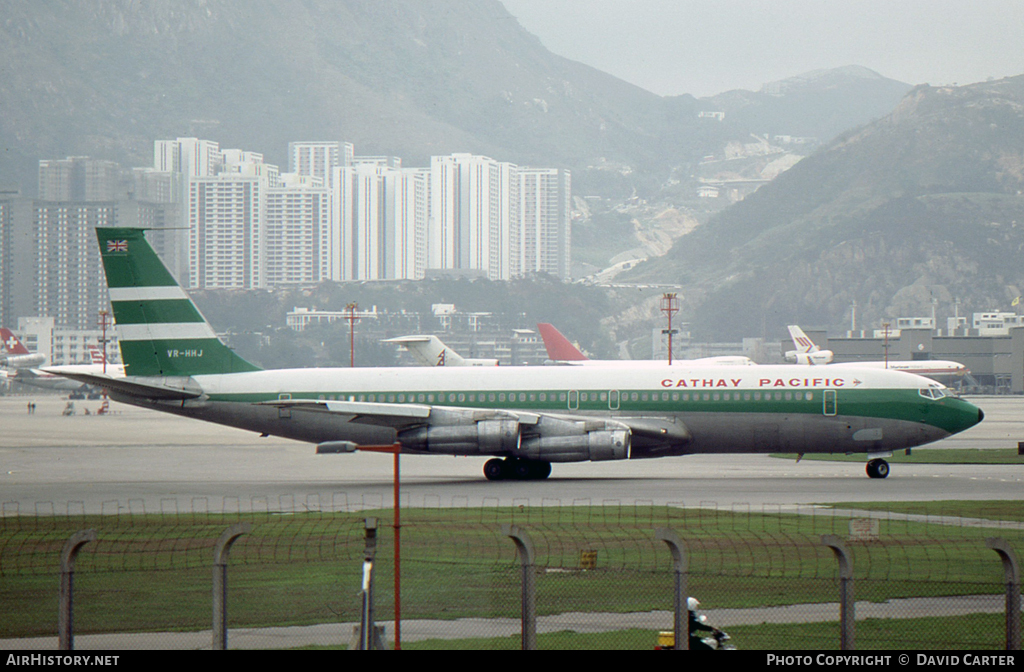
Specifications
General Characteristics
- Predecessor !VR! DC-6
- Created On iOS
- Wingspan 117.7ft (35.9m)
- Length 101.3ft (30.9m)
- Height 30.8ft (9.4m)
- Empty Weight 10,422lbs (4,727kg)
- Loaded Weight 24,962lbs (11,322kg)
Performance
- Horse Power/Weight Ratio 0.16
- Wing Loading 35.3lbs/ft2 (172.4kg/m2)
- Wing Area 707.0ft2 (65.7m2)
- Drag Points 9142
Parts
- Number of Parts 314
- Control Surfaces 8
- Performance Cost 1,606

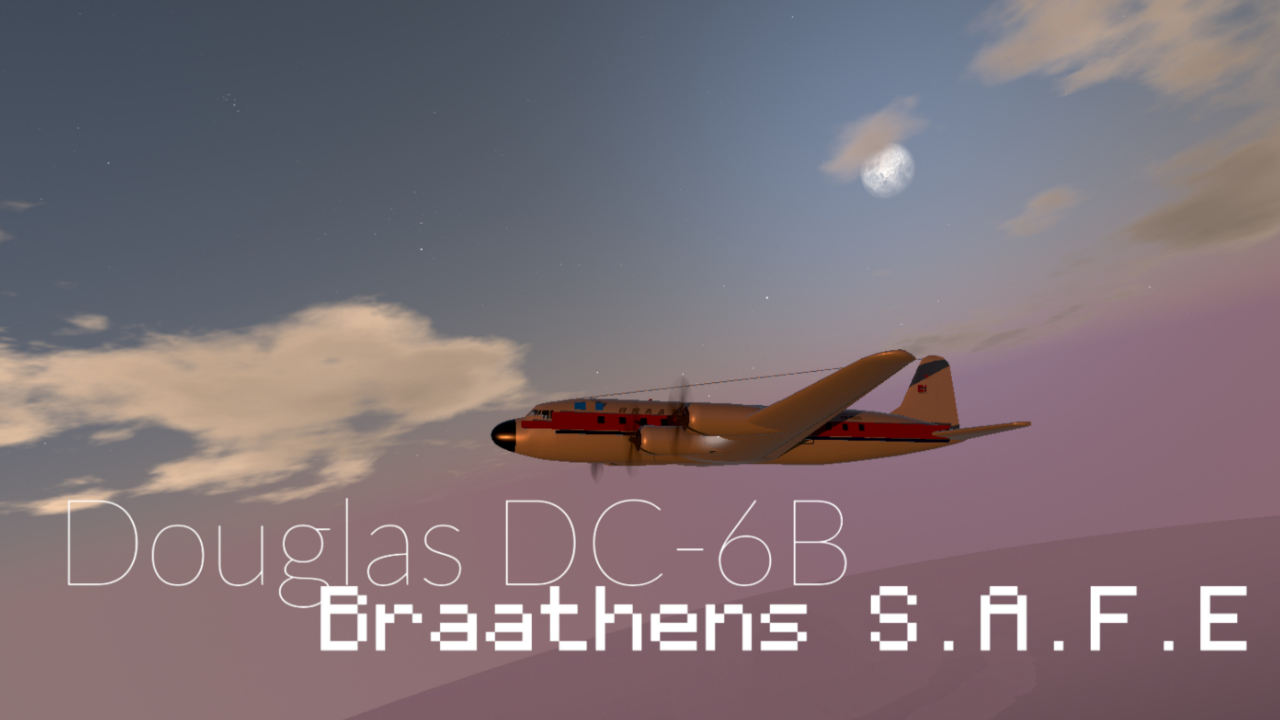
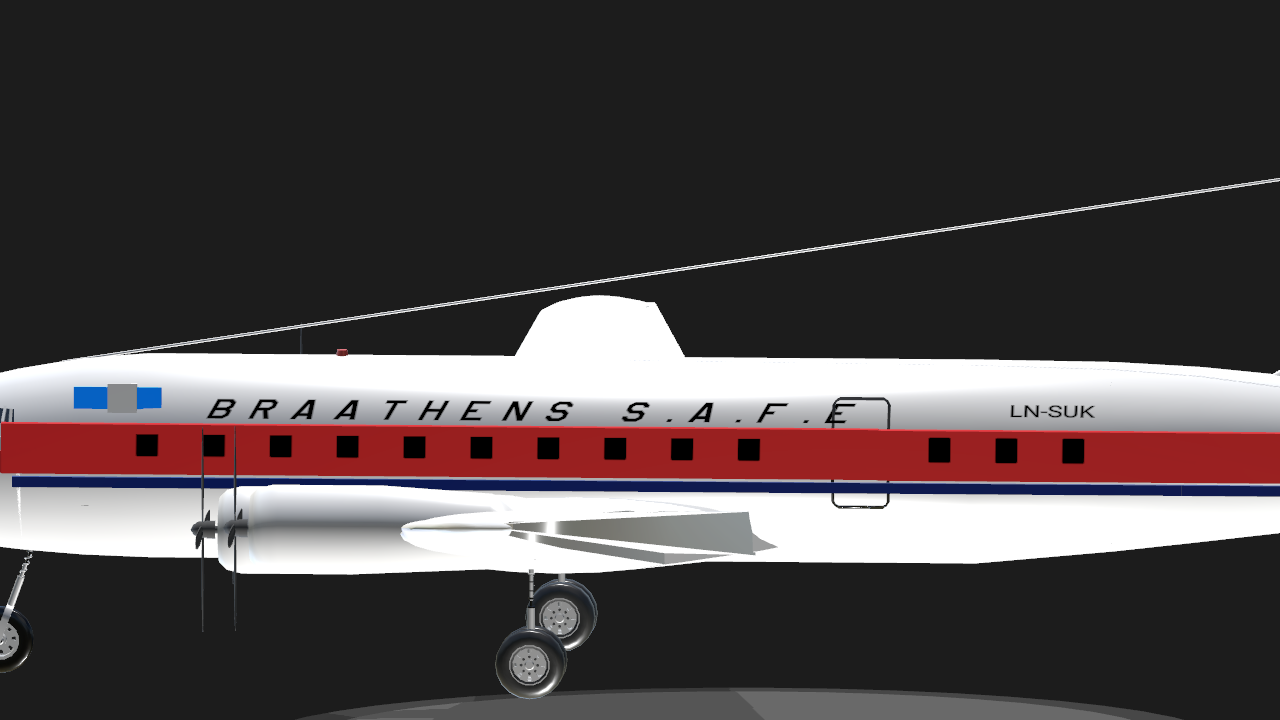
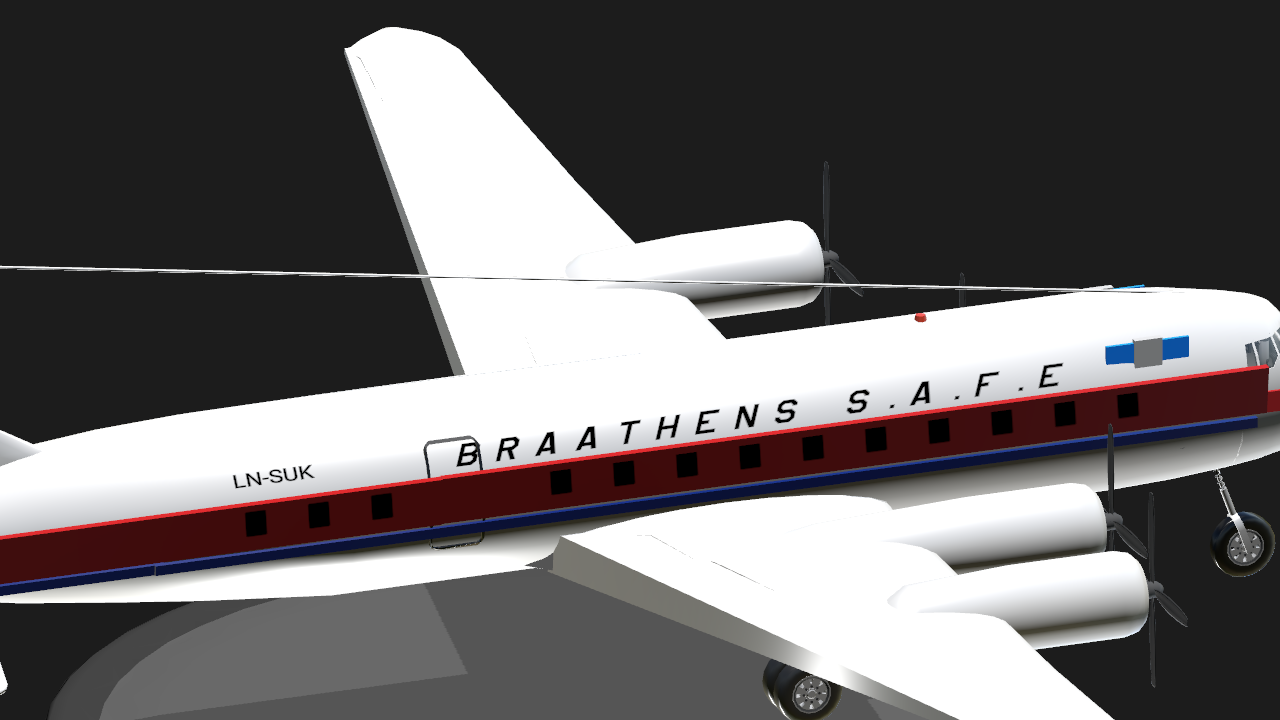
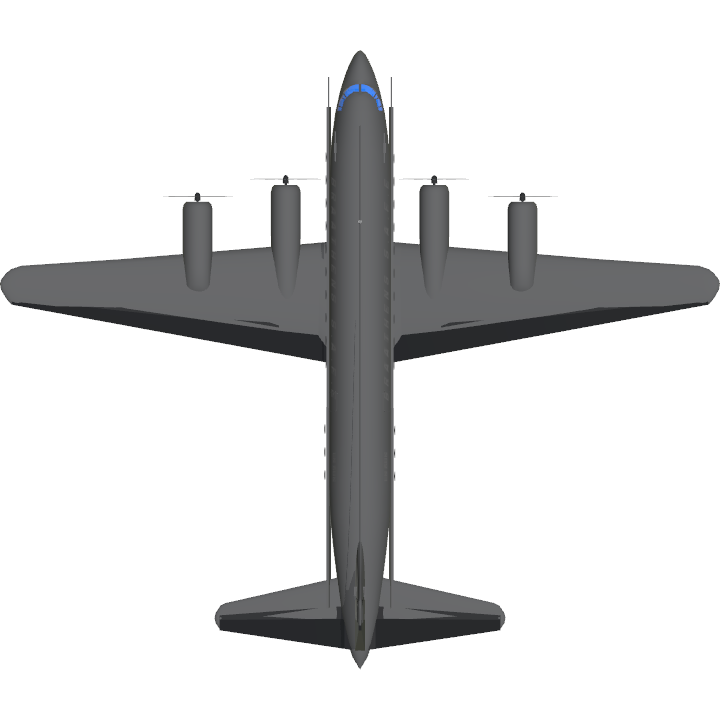
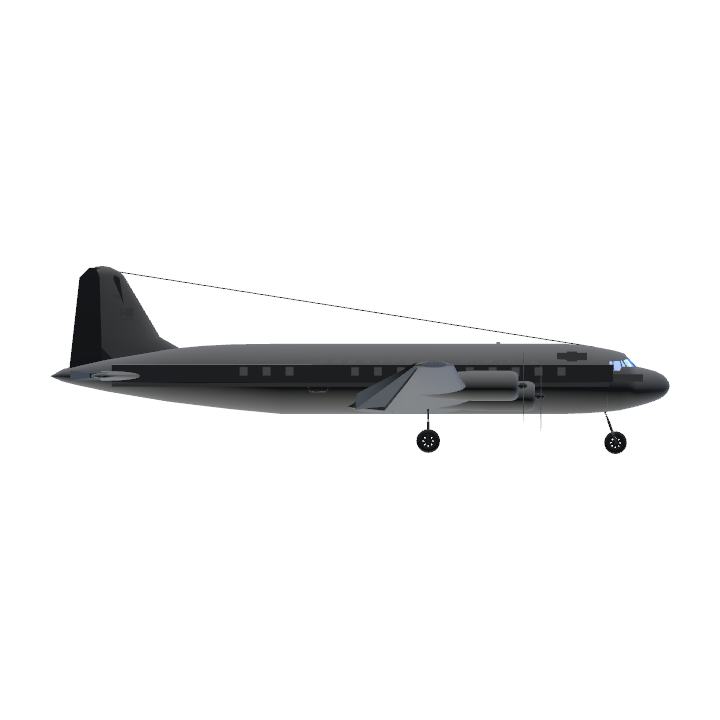
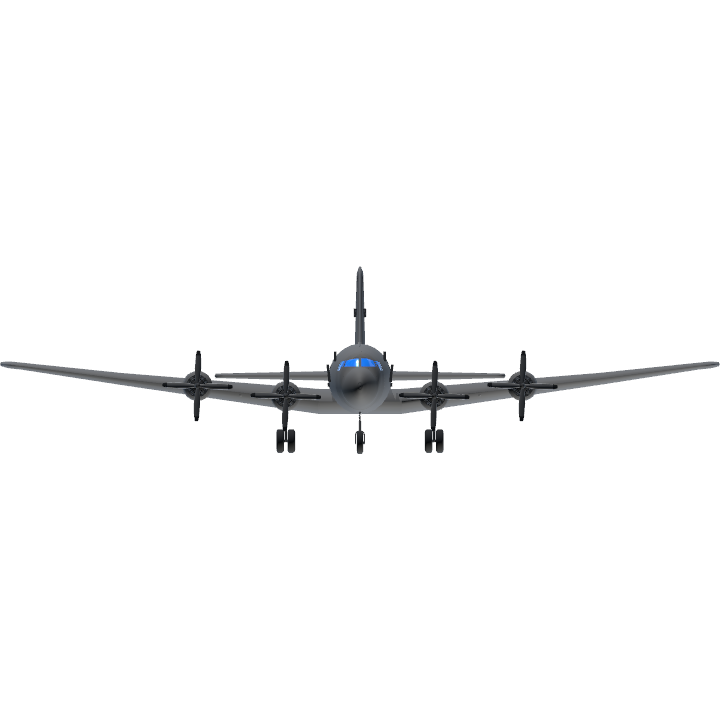
@Zaineman You surpassed the Mouse!
First ! Lol
Z😼